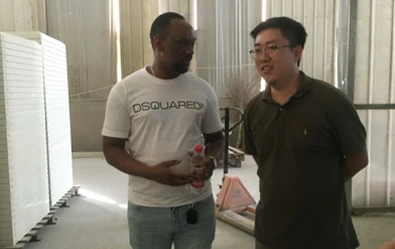loading...
- No. 9, Xingyuan South Street, Dongwaihuan Road, Zaoqiang County, Hengshui, Hebei, China
- admin@zjcomposites.com
- +86 15097380338
- Welcome to visit our website!
Exploring the Applications and Benefits of FRP Pressure Vessels in Industrial Settings
FRP Pressure Vessels A Technological Advancement in Engineering
Fiber-Reinforced Polymer (FRP) pressure vessels have emerged as significant advancements in the field of engineering, primarily due to their unique properties and applications across various industries. These vessels, composed of a polymer matrix reinforced with fibers such as glass or carbon, offer excellent mechanical strength, corrosion resistance, and lightweight characteristics, making them ideal for storing and transporting liquids and gases under pressure.
FRP Pressure Vessels A Technological Advancement in Engineering
Additionally, the lightweight nature of FRP pressure vessels presents both economic and operational benefits. Weighing significantly less than their metallic counterparts, FRP vessels facilitate easier handling and installation. This lightweight property can lead to reduced shipping costs and enhanced efficiency during transportation. Furthermore, the ease of installation can lead to lower labor costs and faster project timelines, making FRP a cost-effective solution for many applications.
frp pressure vessel

The versatility of FRP materials allows engineers to tailor the design of pressure vessels to meet specific requirements. By varying the type of reinforcing fibers and the matrix material, manufacturers can optimize the strength, stiffness, and thermal resistance of the vessels based on the intended application. This adaptability makes FRP an attractive option for industries such as oil and gas, water treatment, pharmaceuticals, and aerospace.
Moreover, FRP pressure vessels are increasingly recognized for their environmental benefits. As industries worldwide strive to reduce their carbon footprint, the production processes for FRP materials often require less energy compared to traditional metal fabrication. Additionally, the long service life of FRP vessels reduces the need for frequent replacements, thereby conserving resources and minimizing waste.
However, it is essential to consider some challenges associated with FRP pressure vessels. Their production can be more complex and requires skilled labor, which may lead to higher initial costs. Furthermore, the long-term performance of FRP in certain extreme conditions is still a subject of ongoing research, necessitating comprehensive testing and standards for various applications.
In conclusion, FRP pressure vessels represent a remarkable blend of innovation and practicality in modern engineering. Their corrosion resistance, lightweight properties, and design versatility position them as a superior alternative to traditional metal vessels. As industries continue to evolve and emphasize sustainability, the use of FRP pressure vessels is likely to expand, paving the way for safer, more efficient, and environmentally friendly solutions in pressure containment. As technology advances, further developments in FRP materials and manufacturing processes may unlock even more potential for these versatile vessels in diverse applications.
-
Transform Your Spaces with FRP Grating SolutionsNewsNov.04,2024
-
The Versatility and Strength of FRP RodsNewsNov.04,2024
-
The Excellence of Fiberglass Water TanksNewsNov.04,2024
-
The Benefits of FRP Grating for Your ProjectsNewsNov.04,2024
-
Elevate Your Efficiency with FRP Pressure VesselsNewsNov.04,2024
-
Welcome to the World of FRP Pressure VesselsNewsOct.12,2024
-
Unveiling the Future of Filtration: Why FRP Filter Vessels are a Game ChangerNewsOct.12,2024
